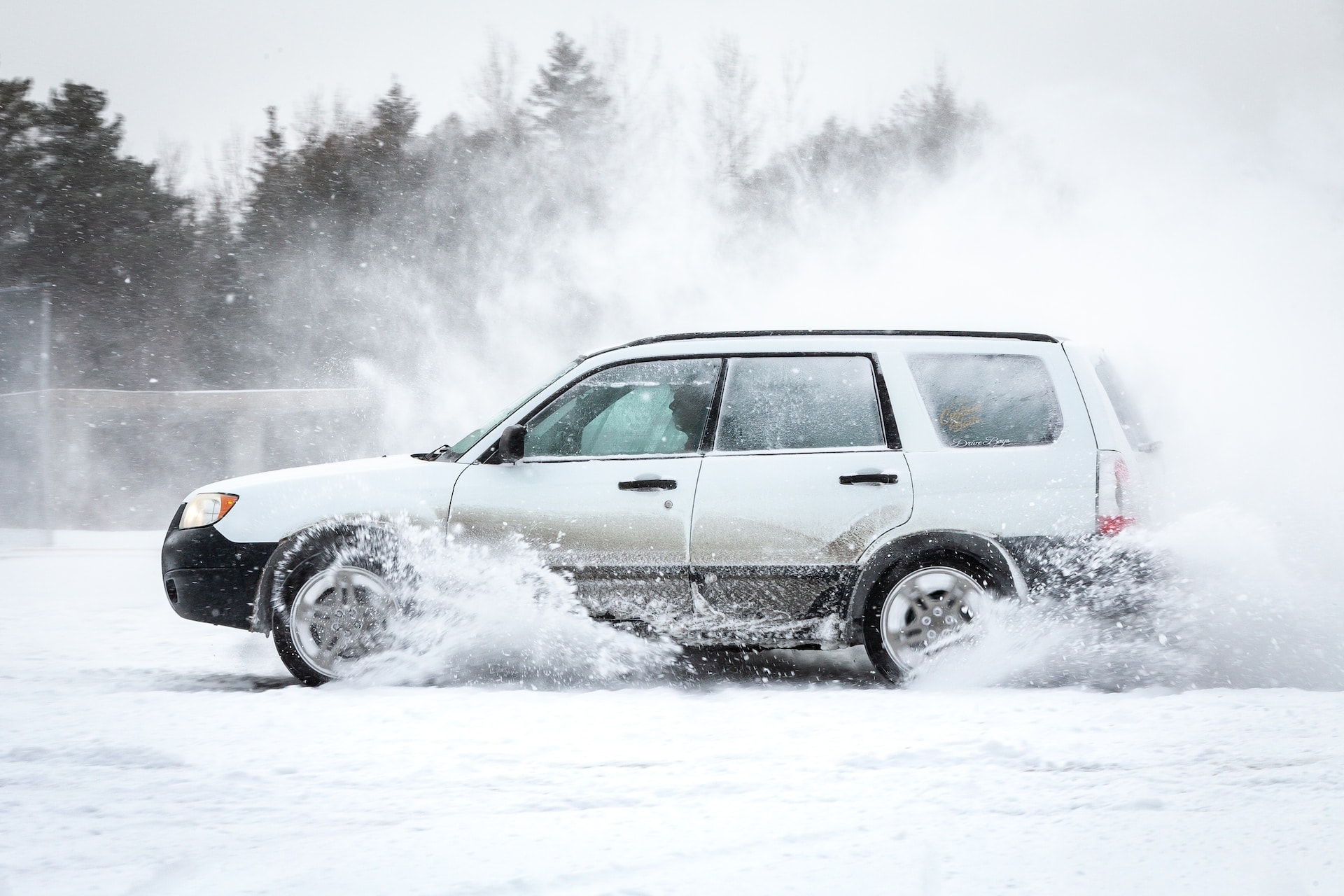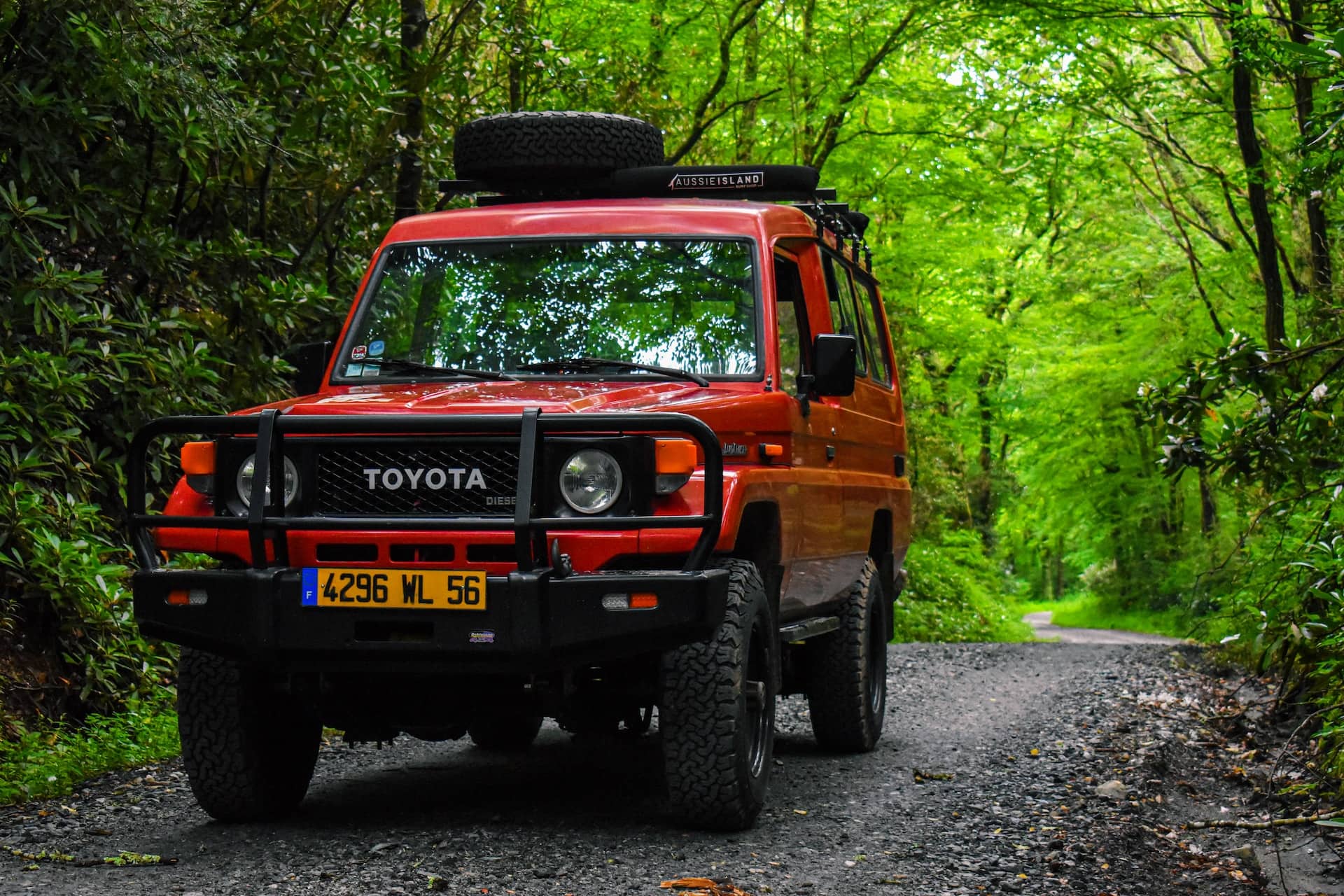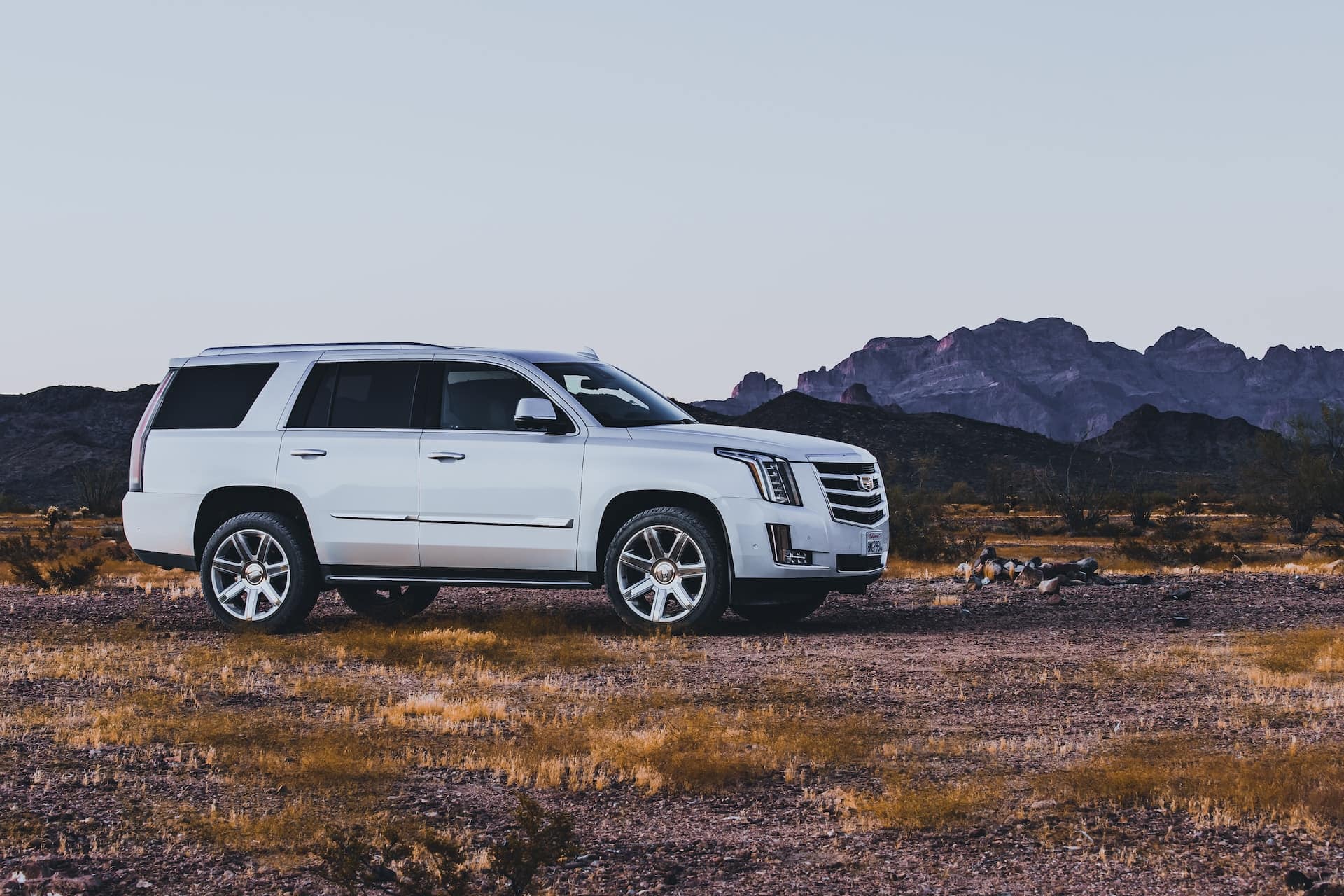All-wheel-drive and four-wheel-drive (AWD and 4WD) are very similar in principle. However, in my experience as a light vehicle technician, an automotive writer, and a general enthusiast, I’ve seen many people get caught out by the salesperson’s pitch. While most car owners assume 4WD and AWD are one and the same, my article here should underline one thing – they aren’t. (Although the differences are somewhat blurred in today’s electronic age!)
As I compare AWD vs. 4WD in the text below, I’ll recommend where each is appropriate. It’s challenging to call either better than the other – like many such things, they’re simply designed for different tasks.
Practicality will be a factor in my thoughts, as will functionality and costs. Everyone’s needs are different, and it might be that neither AWD nor 4WD is necessary for you!
So, without any further ado, let’s get into it!

Bottom Line Up Front
While both 4WD and AWD drivetrains can power all four wheels of your vehicle, four-wheel-drive is stronger and better for off-roading, while all-wheel-drive is more economical and suited to on-road driving.
AWD vs. 4WD isn’t about which is best. It’s more about which setup suits your circumstances.
Below, I’ve compiled the comparative factors between all-wheel-drive and four-wheel-drive so you can see which is best for you.
- All-wheel-drive: most driving happens on roads; fuel economy is important to you; the most significant thing you tow is a large trailer or RV; most settings adjust automatically.
- Four-wheel-drive: regular off-roading trips in the wilderness; off-road performance matters; you regularly tow heavy trailers or RVs or use your vehicle to rescue others; the driver must manually set the 4WD.
AWD vs. 4WD – Key Differences
Generally, here’s how you differentiate between AWD and 4WD. 4WD vehicles have a transfer case; AWD cars don’t. However, both systems are capable of powering all four wheels.
The complexities involved in AWD and full-time 4WD systems in recent years mean they’ve started to overlap. However, the principle of a transfer case or not remains the same.
The line is particularly blurred when it comes to EVs and hybrids. Since these don’t use driveshafts or prop shafts at all, there’s nowhere to fit a transfer case. As a result, by our definitions, all EVs are AWD rather than 4WD, even though many – such as the Rivian R1T – are accomplished off-roading vehicles.
Here are the key differences between all-wheel-drive vs. four-wheel-drive.
- 4WD systems have a transfer case; AWD setups don’t. They use viscous couplings and/or complicated clutches with multiple plates.
- 4WD is heavier duty than AWD and therefore better for off-roading.
- AWD allows better fuel economy and traction on roads.
- Settings adjust automatically in AWD; the driver must manually switch to 4WD (in traditional setups).
- You need to be in Neutral to switch to traditional 4WD; you don’t need to be in Neutral to activate AWD.
- 4WD brings a more robust drivetrain and, as a result, is better for towing.
- Both systems are expensive. The AWD drivetrain, specifically, is more costly. Still, an overall 4×4 package is likely to be even more.
Four-Wheel-Drive (4WD) in Detail

A four-wheel-drive transmission is for you if you do a lot of serious off-roading.
I’m writing about four-wheel-drive first because it’s simpler to explain. Four-wheel-drive, often abbreviated as ‘4WD’ or ‘4×4’ (they mean the same thing), involves a transmission (or ‘gearbox’) that can send power to all four wheels.
Alongside the traditional gear selector, you’ll see an electronic switch or a second shifter, similar to a manual transmission gear stick. This operates the transfer case, allowing the driver to choose between two-wheel-drive or four-wheel-drive.
A transfer case sits in the middle of the car, separating the prop shaft into two halves. When engaged, it allows power to flow to the rear, sending it to the back wheels as well as the front. In some vehicles, especially trucks and Australian utes, it works the other way around – power goes solely to the rear in 2WD.
These days, some manufacturers implement 4×4 drivetrains that are always active and can be safely used on the roads, unlike traditional setups. (Using standard four-wheel-drive on the road damages your differentials, transmission, and bearings over time and can even mean your tires slip as you steer.) These have no standard two-wheel-drive mode – all four wheels are always powered.
4x4s usually allow two four-wheel-drive ratios: high range and low range. In simple terms, these refer to the speeds you’ll range – low range equals low speeds, and high range equals high speeds.
(In reality, these expressions – high- and low-range – have more to do with torque bands. With a ‘lower’-range transmission, torque is available in a narrower engine rev range, so it takes less effort to turn the wheels more. This means you have more control over the wheels’ turning speed and are less likely to encounter sudden spinning bursts of power, making it perfect for traveling up or down steep or rocky surfaces.)
While a four-wheel-drive drivetrain with low range is a vital part of going off the beaten track, other components are crucial. These should include locking differentials, winches and recovery points, heavy-duty tires and suspension, underguards, etc.
Pros and Cons of 4WD
4WD Pros
- Vital for serious off-roading
- Maximum traction
- Mechanical components – tried and tested systems
- Permits heavy-duty towing applications
4WD Cons
- More expensive to install and buy
- Makes the car heavier
- No need to use 4WD in most daily driving applications
- Using traditional 4WD on paved roads can damage differentials and driveshafts
All-Wheel-Drive (AWD) in Detail

AWD is most appropriate for you as someone who spends almost all their time driving on paved roads. If you drive a mid-size SUV or something bigger, you’ll likely have an all-wheel-drive (AWD).
There are two types of AWD: full-time and part-time.
- Part-time AWD is, in my experience, more common. Here, power always goes to one live axle (usually the front). When one of these wheels spins, the AWD system automatically sends power to the other axle, providing extra grip. Look at many daily drivers – modern SUVs and sedans – to see part-time all-wheel-drive. Part-time systems are the best options for fuel economy.
- Full-time AWD is, just like it appears, always switched on. Power goes to the four wheels all the time. However, the power split ratio between the front and the rear might adjust as you drive. Subaru is well known for its full-time all-wheel-drive. Another good, well-known example is Audi’s traditional Quattro system. Full-time AWD is best for optimal performance, especially acceleration.
Since all-wheel-drive is much more dependent on electronics than driver input, it adjusts to unexpected circumstances much quicker. You also find much more variation between manufacturers regarding how the AWD systems work.
Here are some extra features you might find in an all-wheel-drive vehicle.
- AWD Lock – a designated button on your instrument cluster or center console locks the all-wheel-drive system. All the wheels receive 25% of the engine power and turn at the same rate. It’s intended for temporary use, such as getting out of a snow drift. As a result, it’s usually limited by speed and self-cancels once you reach a limit preset by the manufacturer.
- Torque vectoring – like 4×4 setups, most AWD systems only divide power between the front and rear. Torque vectoring allows the car’s computer to send torque to respective wheels, maximizing traction. Luxury cars use complex setups for this, while standard systems simply use brakes to lower the speeds of individual wheels.
- EV AWD – an EV is powered by an electric motor. If yours has an AWD setup, it’ll have either two (one for each axle) or four (one for each wheel). Through clever, immediate computer calculations, the amount of torque each motor creates is constantly adjusted.
- Hybrid AWD – manufacturers design hybrids in all sorts of ways. However, a typical AWD hybrid system might involve an internal combustion engine (with battery backup) at the front and an electric motor powering the rear axle. The motor at the rear might only be activated when the front wheels lose traction.
Pros and Cons of AWD
AWD Pros
- Better fuel economy than 4WD
- Brilliant for on-road use
- Automatic torque distribution adjustments mean better traction in surprising situations (like heavy rain or a mudslide)
- Depending on the vehicle, AWD can sometimes be used for light-hearted off-roading
AWD Cons
- Not as good in off-roading circumstances as 4×4 systems
- More expensive systems than 4WD
- Complicated electronics could lead to more expensive, difficult-to-fix issues
Alternatives: Should You Stick with Two-Wheel-Drive (2WD – FWD or RWD)?

Before leaving on that note, I wanted to run traditional two-wheel-drive systems past you. Perhaps this is all you need!
Two-wheel-drive systems mean that only one axle (with its two wheels!) receives power. 2WD could refer to either front-wheel-drive or rear-wheel-drive.
For example, a small hatchback or mid-sized SUV might come with front-wheel-drive. The engine and transmission sit at the front and deliver power to the front wheels via the driveshafts.
In contrast, a traditional American muscle car has rear-wheel-drive. While the engine and transmission are still at the front, a propellor (‘prop’) shaft sends the power to a final drive in the center of the rear axle. From here, the rear wheels spin. The only job of the front axle is to steer.
Rear-wheel-drive is useless when it comes to off-roading or winter conditions. There isn’t enough weight over the axle, which is why you always see muscle cars doing those extraordinary drifts and tank slappers. Without this traction, you’ve got nothing, making them downright dangerous on any unsealed surfaces. Avoid RWD at all costs if you’re on snow, ice, sand, dust, rocks, etc..
But front-wheel-drive (FWD)? Here, there’s something. Since front-wheel-drive is typically found on light cars like hatchbacks, they’re less likely to get bogged down in loose surfaces. Couple that with the fact that most of the weight (from the engine) sits over or near the front axle, and you have excellent traction. In fact, front-wheel-drive cars with snow tires perform better than 4WD vehicles with standard tires in snow!
If you live somewhere that experiences mild sub-zero temperatures in winter and don’t expect to come across deep snow drifts, a front-wheel-drive vehicle (and snow tires!!) is most likely all you need. This has the potential to save you quite a lot of money when car shopping.
A front-wheel-drive car will never compare to a 4×4 or even an AWD vehicle when it comes to off-roading, of course.
FAQs
Question: Is ‘Hill Descent Mode’ the same as low-range 4WD?
Answer: Hill Descent Mode (or whatever your vehicle manufacturer calls it) is an electronic system designed to emulate low-range four-wheel-drive. It isn’t the same, although it’s pretty good in most on-road situations and many off-road, too. Low-range four-wheel-drive uses gear ratios to adjust how much power goes to the wheels in relation to the engine speed. As a result, as your engine revs up when you go downhill, the wheels don’t turn much quicker, controlling your descent.
In contrast, Hill Descent Mode uses a combination of sensors and existing parts, including ABS and traction control, to slow your speed as you drive down a hill. Essentially, it pumps the brakes without you necessarily realizing it. In short, a car with Hill Descent Mode is better suited to the road, while you’ll probably need a 4WD low-range transmission setting for any intense off-roading.
Question: AWD vs. 4WD – Which is better for snow?
Answer: Based on experience and tons of studies, the most critical factor in sub-zero conditions is your tires. Get snow tires on! This makes an incredible difference, far more than your drivetrain (apart from rear-wheel-drive, which is downright treacherous)!
If you live in the north or Canada (or elsewhere) and are likely to experience significantly cold winters, an AWD or full-time 4WD system might give you a slight advantage on the roads. Traditional 4×4 setups could also be beneficial for getting out of drifts or traversing steep roads or driveways, but it’s vital to turn it off once you reach cleared asphalt.
I often point readers to the following YouTube video: a brilliant representation of how much your tires matter! Please watch it!
Question: Why shouldn’t you use traditional 4WD on the road?
Answer: A 4WD system locks all the wheels into moving at the same rates. When you’re off the road, this provides much-needed extra traction to get yourself out of tricky situations. Depending on the manufacturer, the 4WD will either lock the central differential, the central and the rear, or all three (central, rear, and front).
When you’re on the road, the asphalt or concrete surface has much more friction. Therefore, when one wheel turns more than another (such as when going around a corner), it twists the differentials more than they can be created to handle. This strain passes through the entire drivetrain to the transmission, affecting bearings and driveshafts. Over time, this will do damage.
The locked diffs can also cause tires to slip when you’re going around corners since they’re both trying to turn at the same rate. You might hear a rubbing sound or notice jumping, especially in tighter bends and U-turns. (Standard, open differentials allow the outer tire to turn more than the inner tire, which is necessary for all steering.)
Finally, four-wheel-drive requires much more fuel than two-wheel-drive. Switching back means you’ll save an awful lot on the fuel front. Remember to switch back to two-wheel-drive just before rejoining the road, and your car or truck will be as happy as Larry. If you need to use 4WD on the street, only use it temporarily and at low speeds.
AWD vs 4WD: Conclusion

From a boring, practical standpoint, I feel that most readers would find more value in an all-wheel-drive vehicle. However, if you’re an off-roading enthusiast and enjoy trips out into the wilderness or forest, 4WD options are still brilliant. Use it in two-wheel-drive most of the time and switch to four-wheel-drive when it comes to playtime.
And, if neither AWD nor 4WD floats your boat, there’s always the tried and tested front-wheel-drive! That’s about all from me. I hope this article clears up the differences between all-wheel- and four-wheel-drive and clarifies when you should use each type.
Thanks for sticking with me all the way to the end!
Recommended Reads:
• 4×4 Vehicle Types and Models: A Complete Guide
• 2WD to 4WD Conversions Guide
- AWD vs 4WD: Which Is Right for You? - October 9, 2023
- Best Jeep Gladiator Wheels Guide: How to Buy the Right One? - May 8, 2023
- Your Ultimate 1977 Ford F150 Guide - May 8, 2023

